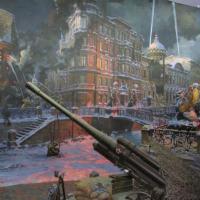
The Siege of Leningrad: Introduction
In this series of articles, I plan to cover the Leningrad Dutch (A84) and, more specifically, a recently-finished tournament that I've hosted called "The Siege of Leningrad." These articles will begin by explaining the opening, then by covering some of the interesting games of the tournament.
The Opening
So, what exactly is the Leningrad Dutch? Perhaps this board with annotations can explain it more clearly.
So, proceeding from here, we have three main choices from Black, which will be explained below. See the moves list for extensive variations and other move options.
7... Qe8
The thematic move 7... Qe8 is considered to be the main line of the opening. It is seen as the most dynamic move; although it may look odd at first glance, its general goal is to reinforce the e-file and to put the queen on more active diagonals - the d8-h4 diagonal is not likely to open early or to see much action. On e8, the Queen supports the central break e7-e5 to see a KID-style attack on the kingside, or e7-e6 in the case of 8 d5 from White, clamping down on Black's center. White wants to push b4 (as in the KID Bayonet Attack) and initiate a Queenside attack, possibly breaking with e4.
7... c6
This is known as the Warsaw Variation (A88). This move seeks to blunt White's light-square Bishop along the long diagonal while reinforcing d5. It stakes a modest claim to the center as well. Black achieves a solid position, and if White pushes too hard he can find himself quickly losing his opening advantage, sometimes with positional pluses for Black - having solidified his queenside defense for now, he can attack with e5 quickly against some lines with a small advantage. White once again seeks to push d5 and b4 with queenside attack, or d5 and b3 with a solid pawn chain in the center and chances on Black's long diagonal.
7... Nc6
This is known as the Matulovic Variation (A89), and is the least popular primarily because White usually plans to play d5 anyway - now it also forces the knight to move. If White does not play d5 immediately (b3 is the next best choice), Black achieves a comfortable position and possibly an advantage. In some lines, despite having doubled e-file pawns Black also gets a kingside majority with which to attack. White can retain a small/notable positional advantage if Black helps the knight escape with ...Na5 after d5, and the game turns drawish with careful play if Black chooses ...Ne5. White tries to make use of the misplaced knight, Black's doubled pawns, and his own strong center to break through.
The general themes of these positions hold true: Black attacks on the kingside while White attacks on the queenside. However, if the position remains closed, positional struggles can ensue; if the position opens suddenly, sharp tactics can present themselves. The opening provides a lot of opportunities for any playing style.
The next articles will review individual games from the tournament. I hope this was an informative introduction to the Dutch Leningrad!





